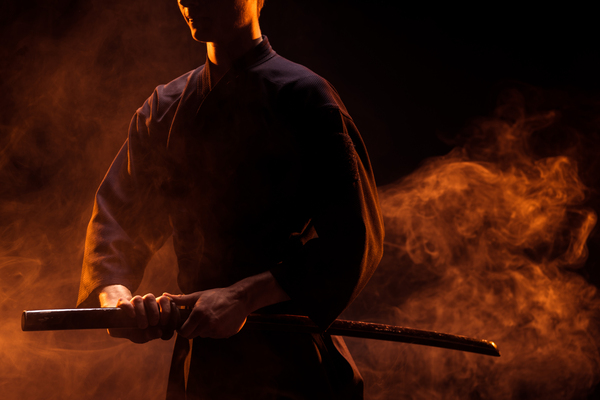Ninjas are a legendary Japanese well-trained group besides the samurai, also known as the shinobi. They also have their own martial arts: Ninjutsu or Ningbo. Unlike other Japanese martial arts, this is not about training awareness, but about effectively executing an order. Above all, ninja had to act silently and avoid conflicts, as their name indicates: Shinobi means “conceal” or “sneak” – also the meaning of the syllable nin, by the way.

But in case a fight did come up, they had to train and master all sorts of self-defense techniques. Taijutsu is the unarmed martial art of the ninja – but handling a bow, spear and sword was also part of their training. Projectiles such as the star-shaped shuriken and small daggers called kunai are particularly associated with the shinobi. Depending on the school of martial arts, they also had to be able to swim and ride horses, and have knowledge of meteorology and geography.
Ninja existed long before our time. Especially in the Japanese feudal period (1185 – 1603) they were used by the nobility and the shoguns (samurai warlords) primarily as spies. Incidentally, because of the ninja, the floors of many traditional Japanese houses are built with special wood that creaks particularly loudly when you step on it. This should protect against intruders in times of the shinobi.
Perfection inside and out
Japanese martial arts often use no weapons: the fighter should anticipate the opponent with careful assessment, quick reactions and targeted use of his energy. This is why empathy is so important in Japanese martial arts, because those who can foresee the next attack have a decisive advantage in combat. Another mental ability that plays a major role in combat is Mu – the Void. This means clearing your mind of any distracting thoughts and following the unfolding of events mindfully. Respect for others – for the opponent, the master (Sensei), other students and for oneself is also required in the training.
This includes not only the fight itself, but also the intensive training and learning the basics of martial arts: bowing, greeting and long stretching and warm-up exercises should prepare the body and mind for the training. For example, if you train on a field, you must bow to it when entering and exiting to show respect.
Various contact sports that work with bare hands have evolved from the original martial arts of Jujutsu. Judo is a “harmless” form of jujutsu that does not use direct attacks and instead works exclusively with throws and holds. At the same time, the techniques of jujutsu grip were used to develop Aikido. There they train how to throw an opponent to the ground and how to roll to the ground skillfully and unharmed. This type of martial art was originally designed to repel a sword attack and uses the opponent’s attack power against himself.

